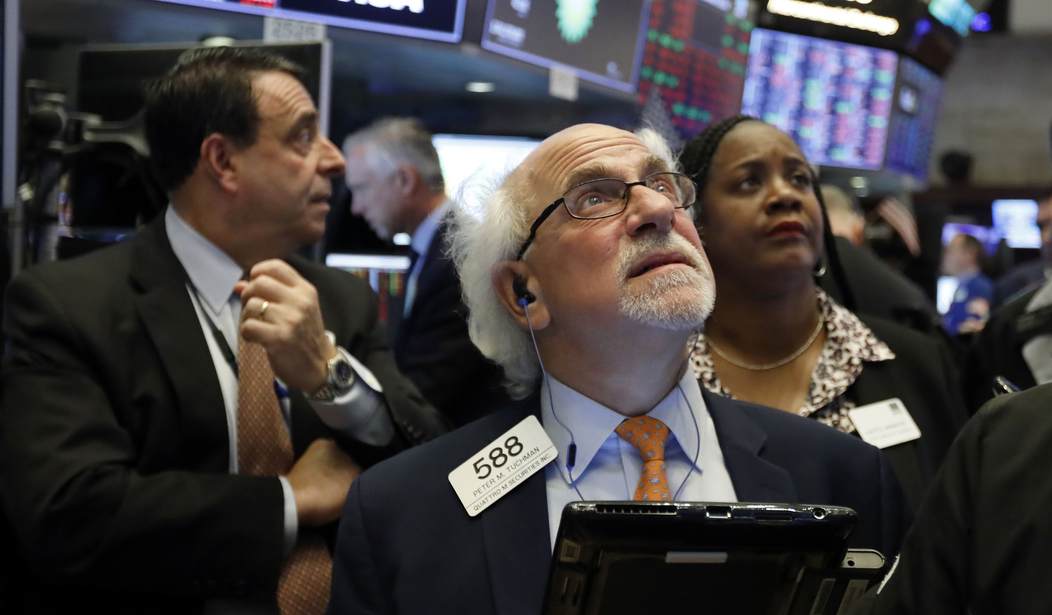Yesterday, the market struggled, but there were never any signs of panic. Folks sitting on monster profits in mega-cap names mostly held, but buyers didn’t step into the breach, sensing more potential downside. On that note, if you had told me there would be far more advancers than decliners on the NASDAQ Composite, and the up volume would be three times down, I would have thought you were nuts.
Market Breadth | NYSE | NASDAQ |
Advancing | 1,972 | 2,754 |
Declining | 1,346 | 1,708 |
52 Week High | 118 | 129 |
52 Week Low | 47 | 91 |
Up Volume | 2.96B | 3.38B |
Down Volume | 1.08B | 1.18B |
Rotation – Follow the Yield
The Tech sector was down, but the real rotation was out of defensive sectors (Real Estate, Utilities, Health Care & Consumer Staples) into cyclical names.
S&P 500 Index | -0.28% | |
Communication Services XLC | -0.01% | |
Consumer Discretionary XLY | +0.54% | |
Consumer Staples XLP | -0.45% | |
Energy XLE | +3.56% | |
Financials XLF | +1.36% | |
Health Care XLV | -1.42% | |
Industrials XLI | +0.10% | |
Materials XLB | +0.78% | |
Real Estate XLRE | -1.66% | |
Technology XLK | -0.97% | |
Utilities XLU | -1.18% |
In fact, the Tech sector is only off 1.6% in the past week, even as the ten-year yield is up 12.6%. So, it looks as if some of the cash coming out of Big Tech might be going into Little Tech.
Healthy Fear
Investors are less fearful than a month ago, but they still have a healthy level that belies the narrative of unbridled bullishness and irrational exuberance.
The Fear & Greed Index could swing further into the red, but the current read is about the spot where contrarians consider accumulating positions.
Meanwhile, the CBOE Volatility (VIX) Index, aka the (Fear Index) rallied 5% yesterday to 18.76. But it’s down a ton from 25.71 on September 20th.
Click here to see the fear index.
Horse-Trading
Origins of Horse-Trading |
An American idiom for hard, shrewd bargaining dates from c. 1820 and derives from horse traders noted for their negotiation skills. |
Recommended
Idiom Origins
Apparently, investors have been watching all the horse-trading among Democrats, as the clock ticks down and the window of opportunity gets ready to close on two massive spending bills. An infrastructure bill, which has bipartisan support, and a so-called social spending bill that can’t get all Democrats on board. So, there is speculation if the latter is tripped up, the former will be deliberately sabotaged.
Investors are getting the message and getting cold feet; robust flows into infrastructure stocks have not only stalled but have turned into outflows.
Speaker Pelosi continues to say both bills will pass, but timelines have been altered, as many see this as the golden moment to bring home more bacon, while others see this as a chance to create an America of their dreams.
It’s Electric
There is a ton of money in electric vehicle (EV) bills, but perhaps that doesn’t have to be the case. After the close, Ford (F) announced a massive investment in electric vehicles with a Korean battery maker to churn out electric F-150s.
- Three battery plants
- One assembly plant
- $11.7 billion (Ford putting up $7.0 billion)
- Memphis
- Louisville
Powell Drops the Hammer
Last week, Fed chairman Jerome ‘Jay’ Powell seemed ticked when asked about active trading by Fed officials. Yesterday, the two officials in question abruptly announced their retirements. Intriguingly, this has happened as odds on Powell being reappointed have begun to decline sharply. I wouldn’t be surprised if a progressive successor isn’t being talked up as part of the horse-trading to pass those spending bills.
Portfolio Approach
We added to Materials yesterday in our Hotline Model Portfolio.
Today’s Session
The ten-year yield continues to move higher since breaking out and that’s pressuring the NASDAQ.
Crude Oil is also clearing a key resistance point, moving to its highest level in three years.
There is no doubt anxiety is running high over the inflation story, which is driving bond yields. Keep in mind, the pace of this rise is probably more concerning than the actual level, which is very low in historic terms.
Today, Jerome Powell will speak before the Senate, and while he admits inflation is more persistent, his opening statement seems to echo prior claims this is a temporary situation.
September 28, 2021 Coronavirus and CARES Act Chair Jerome H. Powell Before the Committee on Banking, Housing, and Urban Affairs, U.S. Senate, Washington, D.C. Inflation is elevated and will likely remain so in coming months before moderating. As the economy continues to reopen and spending rebounds, we are seeing upward pressure on prices, particularly due to supply bottlenecks in some sectors. These effects have been larger and longer lasting than anticipated, but they will abate, and as they do, inflation is expected to drop back toward our longer-run 2 percent goal. The process of reopening the economy is unprecedented, as was the shutdown. As reopening continues, bottlenecks, hiring difficulties, and other constraints could again prove to be greater and more enduring than anticipated, posing upside risks to inflation. If sustained higher inflation were to become a serious concern, we would certainly respond and use our tools to ensure that inflation runs at levels that are consistent with our goal. |
If you are on edge and ready to panic check out this research from MIT – hint: men really should read it.
Paper Hands (Men)
When Do Investors Freak Out? Machine Learning Predictions of Panic Selling


















Join the conversation as a VIP Member